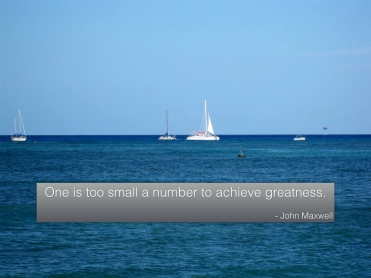Have you ever felt misunderstood, that you were being treated unfairly based on someone else’s misconception?

Photo by Tasha M. Troy
I have experienced this fairly recently with a friend. On more than one occasion, I’ve felt that he was treating me based on a faulty understanding of me and my intentions. What’s worse is he didn’t give me the chance to prove myself; as a result, the friendship has suffered.
This is a very frustrating position to be in!
What can you do to resolve such a situation and move forward? The root of it all is an issue of trust – it became clear to me that my friend did not trust me or my intentions.
A Crisis of Trust
Stephen M. R. Covey, son of the famed author of The 7 Habits of Highly Effective People, says that today “we are in a crisis of trust.” Trust is truly a highly precious commodity that is in short supply today.
One could say social media plays a role; social media ensures that secrets don’t stay secret for long, and it is easy to become cynical when exposed to everyone’s dirty laundry.
However, I think the issue goes much deeper than that.
In his book The Speed of Trust, Mr. Covey describes “5 Waves of Trust” as ripples in a pond: self trust, relationship trust, organizational trust, market trust, and societal trust. It all starts with the individual – to what extent are you a trustworthy and credible person?
At the Center of Trust
Mr. Covey goes on to say that “trust is a function of two things: character and competence.” It seems to me that most people spend a lot of time and energy on developing their competence – pursuing advanced degrees and certifications, building their skills and expertise on the job – but few pay attention to building their character.

You always have a choice – which path will you choose? Photo by Tasha M. Troy
Character has its source in our daily decisions, which forms our habits. I recently described it this way: we can choose to make any situation better or worse. If we consistently choose to make the situation better, we build the habits that lead to strong character. However, if we consistently choose to make the situation worse (including choosing inaction), we build the habits that lead to weak character.
Self-Trust
The first wave of trust, according to Mr. Covey, is self-trust, by which he means personal credibility. Are you able to trust yourself? If you can not trust yourself, no one else will be able to trust you.
I find this closely related to self-discipline. So many times, we hold ourselves to commitments made to others but neglect the commitments made to ourselves. How many times have you made the same New Year’s resolutions and yet failed to keep them? Every day you can choose to keep your commitment to yourself or you can choose to break it, choices that form your character and either establish or corrode your self-trust.
Looking Forward
At one time, it seemed all my efforts to reconnect with my friend simply made the situation worse, so I opted to give him the space he needs to develop some measure of trust in me. This has proven to be moderately effective, and there is evidence that we can become closer friends again in the future. Until then, I can only focus on strengthening my own self-trust and reliability.
If you want to grow in the area of trust, Mr. Covey suggests starting with your commitments to yourself. For me, this means strengthening my self-discipline – getting up when I intend to get up, exercising when I intend to exercise, and following through with commitments both great and small.
What about you? What commitments to yourself are you going to follow through on this week?
Resources:
The Speed of Trust, by Stephen M. R. Covey with Rebecca R. Merrill



 Courage – for some of our team members, this was their first time leaving the US or being in such a rural, underdeveloped region; it took great courage to step out and join the team. I was very proud of how the team accepted the rustic conditions.
Courage – for some of our team members, this was their first time leaving the US or being in such a rural, underdeveloped region; it took great courage to step out and join the team. I was very proud of how the team accepted the rustic conditions. It was only through observing our intentions through how we interacted with them that the Haitians were able to trust us. By the end of the week, we had formed some wonderful relationships despite the language barrier, in large part due to the team living out a high standard of character.
It was only through observing our intentions through how we interacted with them that the Haitians were able to trust us. By the end of the week, we had formed some wonderful relationships despite the language barrier, in large part due to the team living out a high standard of character.





 Next, I think the focus should be to establish a personal connection to the person or group you are wanting to build trust with. In so doing, you have the opportunity to build a track record of keeping the other person’s interests in mind when interacting.
Next, I think the focus should be to establish a personal connection to the person or group you are wanting to build trust with. In so doing, you have the opportunity to build a track record of keeping the other person’s interests in mind when interacting.